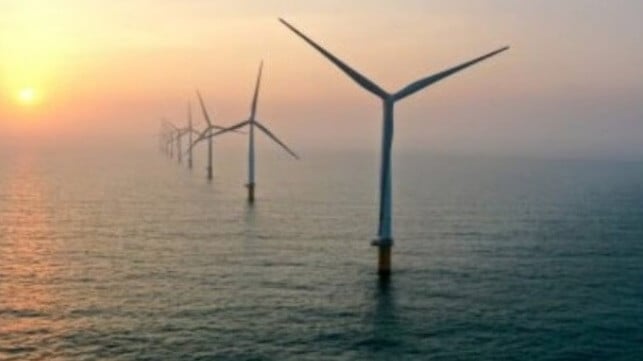BOEM Identifies Environmental Measures for NY Bight Wind Energy Development

The Bureau of Ocean Energy Management today issued a Record of Decision identifying environmental measures expected to be applied to future wind energy development of the six lease areas offshore New York and New Jersey in an area known as the New York Bight. The bureau continues to push forward offshore wind projects with some experts saying the goal is to secure as much of the development before the end of the Biden administration in January 2025.
The six lease areas in the New York Bight cover over 488,000 acres and were sold in a record auction at the peak of interest in offshore wind energy receiving total bids of over $4.3 billion. BOEM continues to estimate that full development of the six lease areas could generate up to 7 GW of offshore wind energy, enough to power up to two million homes.
For the first time, BOEM conducted a regional analysis of offshore renewable energy development and operations over multiple lease areas designed to expedite the projects in the NY Bight. BOEM reported in January 2024 that it decided to take this step to complete a Programmatic Environmental Impact Statement (PEIS) because of the close proximity of the six lease areas and the timing of when BOEM expects to receive future project plans for review.
The Draft PEIS analyzed programmatic avoidance, minimization, mitigation, and monitoring measures that BOEM may require as conditions of its approval for any proposed offshore wind projects in the New York Bight. It was followed in October with the completed environmental review to assess potential wind development activities within six wind lease areas. The Proposed Action for the PEIS identified avoidance, minimization, mitigation, and monitoring measures that BOEM reported it may require as conditions for approval for activities proposed by lessees in the individual construction and operations plans submitted for these six lease areas. Additional environmental analyses specific to each proposed project would build on the PEIS.
Today’s record of decision identifies 58 previously applied avoidance, minimization, mitigation, and monitoring measures BOEM plans to apply across the six lease areas. To reduce potential environmental impacts, developers can consider these measures in the Construction and Operations Plans they submit to BOEM for subsequent review.
The six lease areas went to many of the leading developers in the industry. Bluepoint Wind, a partnership between Ocean Winds (a joint venture of EDP Renewables and ENGIE) and Global Infrastructure Partners (GIP), has one of the leases. Attentive Energy is part of France’s TotalEnergies while Community Offshore Wind was set up as a joint venture between RWE and National Grid Ventures.
Atlantic Shores Offshore Wind Bight was a partnership between Shell New Energies US and EDF-RE Offshore Development, while Invenergy partnered with energyRe on another one of the leases and the final lease went to Vineyard Mid-Atlantic, an extension of Vineyard which has investments from Copenhagen Infrastructure Partners.
Some of the projects have submitted early proposals to state regulators in New York and New Jersey but all are in the survey and planning stages. TotalEnergies, citing the political uncertainties, last week however said it planned to shelve its project. The others could use the work developed by BOEM to submit their individual environmental studies and construction and operation plans to BOEM.
Donald Trump during the presidential campaign renewed his opposition to offshore wind saying he would stop the industry. Industry groups however point out progress during the first Trump administration and hope to be able to continue development of renewable energy projects, possibly at a slower pace.
